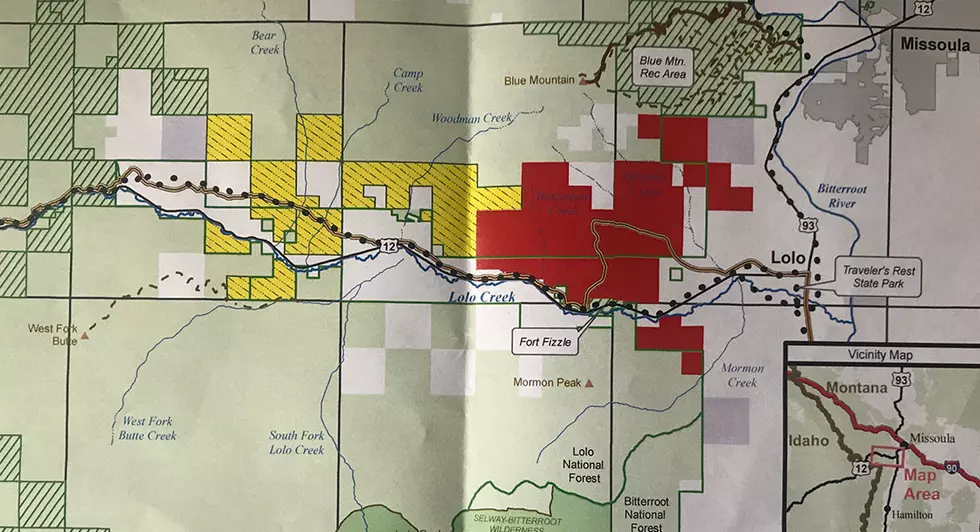
Missoula County backs 14,000-acre Lolo Trails Landmark acquisition
The Lolo National Forest and The Trust for Public Land on Wednesday sought renewed support from Missoula County for the acquisition of nearly 15,000 acres near Lolo prized for its habitat, recreation and historic values.
Commissioners agreed and signed a letter to Regional Forester Leanne Marten and Lolo Forest Supervisor Carolyn Upton, backing their effort to secure an additional $6 million from the Land and Water Conservation Fund to complete the purchase.
Catherine Schmidt, a field representative for The Trust for Public Land, said the funding would secure the second phase of the Lolo Trails Landmark Project.
That phase of the project would acquire roughly 8,500 acres of former industrial timber land from Weyerhaeuser Co., the property's current owner. The two phases together represent around 14,800 acres.
“Last year, we submitted an application for Phase 1 of the project, which was just over 6,000 acres,” said Schmidt. “That project was ranked third highest in national priority by the LWCF. This (second) phase has great benefits to the residents of Missoula County for cultural, recreation, natural resources and wildlife reasons.”
The parcels sit 14 miles south of Missoula and 4 miles west of Lolo. They straddle Lolo Creek and Highway 12 and would preserve portions of the Nez Perce and Lewis and Clark national historic trails.
The area is also rich in wildlife, ranging from bears and Canada lynx to endangered bull trout.
“It would conserve 14,000 acres of trails and space, which are currently open to Missoula County residents under Weyerhaeuser's open lands policy,” said Schmidt. “On this property, and with Lolo National Forest ownership, visitors will be able to hike, backpack, hunt, fish, mountain bike and bird watch.”
According to the project, the timber industry represents just 1.1% of employment within Missoula County while recreation and outdoor tourism account for 21%. The county's population has grown 22% since 2000.
As development spreads to accommodate the region's growing population, efforts are underway to protect certain areas for the future. The Lolo Trails Landmark Project would preserve public access while protecting natural and historic features.
“We did a thorough analysis of this block of land,” said Schmidt. “It had great wildlife habitat, water resources, and it was close to Missoula, which is growing. But what drove this particular project forward was the Nez Perce and Lewis and Clark national historic trails, which are unique to this block.”
While the project has wide support and ranks high within the Land and Water Conservation Fund, both phases of project have not been federally appraised. And the $4.4 million in funding approved for Phase 1 hasn't yet been appropriated.
Together, the two phases are seeking $10.4 million in funding.
“We don't have a federal appraisal yet, so we don't have a market value for these two parcels yet,” said Patrick Bridegam, a realty specialist with the Lolo National Forest. “At this point, we're putting in a request for $10.4 million for both phases. We hope that will cover the full purchase price. If not, we'll look to other funding sources to cover the gaps.”
When the federal appraisal is complete, revealing the properties' full market value, the Lolo National Forest, Trust for Public Lands and Weyerhaeuser will determine how the actual phasing unfolds.
Once secured, however, TPL would pass ownership to the Lolo National Forest, allowing for sustainable forest management, protection of wildlife and public access. It would permanently prohibit development, something that's not currently guaranteed if Weyerhaeuser sold it to another entity.
“At the end, it would go into federal ownership and the Forest Service will be the manager of the property,” said Bridegam. “The partner organization (TPL) manages all the interactions with the land owner, in this case Weyerhaeuser.”
Schmidt added, “We take great effort to make sure the projects we are analyzing and proposing for federal funding have true and real benefits to local communities, as well as wildlife and natural resources.”
